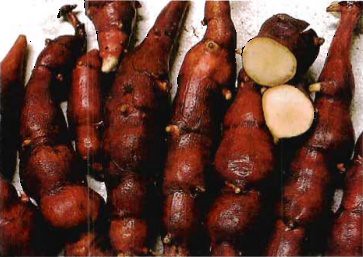
This is the fifth of a series of posts that will cover the "Top 100" forest garden plants taken from volume 1 of the Edible Forest Gardens books. In this post we finish our list of running herbs.

Yarrow - Achillea millefolium
Hardiness zone 3, full sun to part shade, running, 8-36 in. x indefinitely spreading, ground cover, dynamic accumulator, beneficial habitat, specialist nectary (image above)
This low-maintenance workhorse is one of the premier multipurpose support plants for the forest garden. It forms clumps but sends out vigorous runners to form new clumps. Many assume that yarrow is in the Apiaceae, due to its umbel-shaped heads, but it is in fact a member of the aster family (Asteraceae). Regardless, it is a fine specialist nectary plant. It also provides foliage habitat and egg-laying sites for ladybugs, spiders, lacewings, Carabid beetles, and parasitoid insects. It dynamically accumulates phosphorus and potassium, among other nutrients, and, of course, it is a popular ornamental, drought tolerant, and medicinal too! Although a bit aggressive, yarrow has much to offer as a multifunctional plant for the edible forest garden.
Pink Tickseed - Coreopsis rosea
Hardiness zone 3-9, full sun, running, 1-2 ft. x indefinitely spreading, ground cover, specialist nectary
This native wildflower is a popular and attractive ornamental and a low-maintenance, multipurpose forest-garden plant. It forms a moderately dense ground cover and spreads rapidly. This specialist nectary blooms profusely from July to September, providing much fuel for beneficial insects. Growing the wild type, rather than named cultivars, may provide the highest nectar yield for beneficials, as plant breeding for ornamental qualities often unintentionally decreases nectar production by flowers. Note that the related clumping Coreopsis species are also fine choices for the forest garden.
Jerusalem Artichoke - Helianthus tuberosus
Hardiness zone 2, full sun to part shade, running, 6-12 ft. x indefinitely spreading, edible roots (image below)
This enormous perennial sunflower relative is among our best native wild edibles. Jerusalem artichokes produce truly enormous quantities of tubers. They are generally somewhat smaller than potatoes and taste crisp and sweet. Jerusalem artichoke is one of the few commercially grown perennial vegetables, and one of the very best low-maintenance food crops for our climate. For some people the roots can cause flatulence, particularly when eaten raw. Keep trying; your body will adjust if you eat them frequently. Jerusalem artichoke grows in dense stands. Either respect it and give it plenty of room to spread, or fence it in with rhizome barriers. Dwarf varieties may be somewhat more manageable, or at least less competitive. Annual harvesting invigorates the plants and leads to higher yields. Jerusalem artichoke has a reputation for being quite persistent, even weedy, but apparently if you uproot the plants in July when they are flowering, they will not come back. At least not as much!
Daylily - Hemerocallis spp.
Hardiness zone 2 or 3, full sun to part shade, running, 1-5 ft. x indefinitely spreading, edible flowers, buds, and tubers
Daylilies certainly have a role to play in the forest garden, although contemporary landscaping clearly overuses them. The flowers and flower buds are a popular vegetable in northern Asia, and those in the know in the United States and Canada eat them, too. The tubers are also edible, and quite productive. They can cause a bit of digestive upset for those who are not accustomed to them, so use them with caution. Daylily does not fit this book's definition of a ground cover (it is too tall), but it is a great ground cover nonetheless. The challenge is that daylilies are too large and vigorous to be a good companion to most herbs. Daylilies are a good low-maintenance choice for an area of your garden to which you don't want to have to pay any attention.



No comments:
Post a Comment